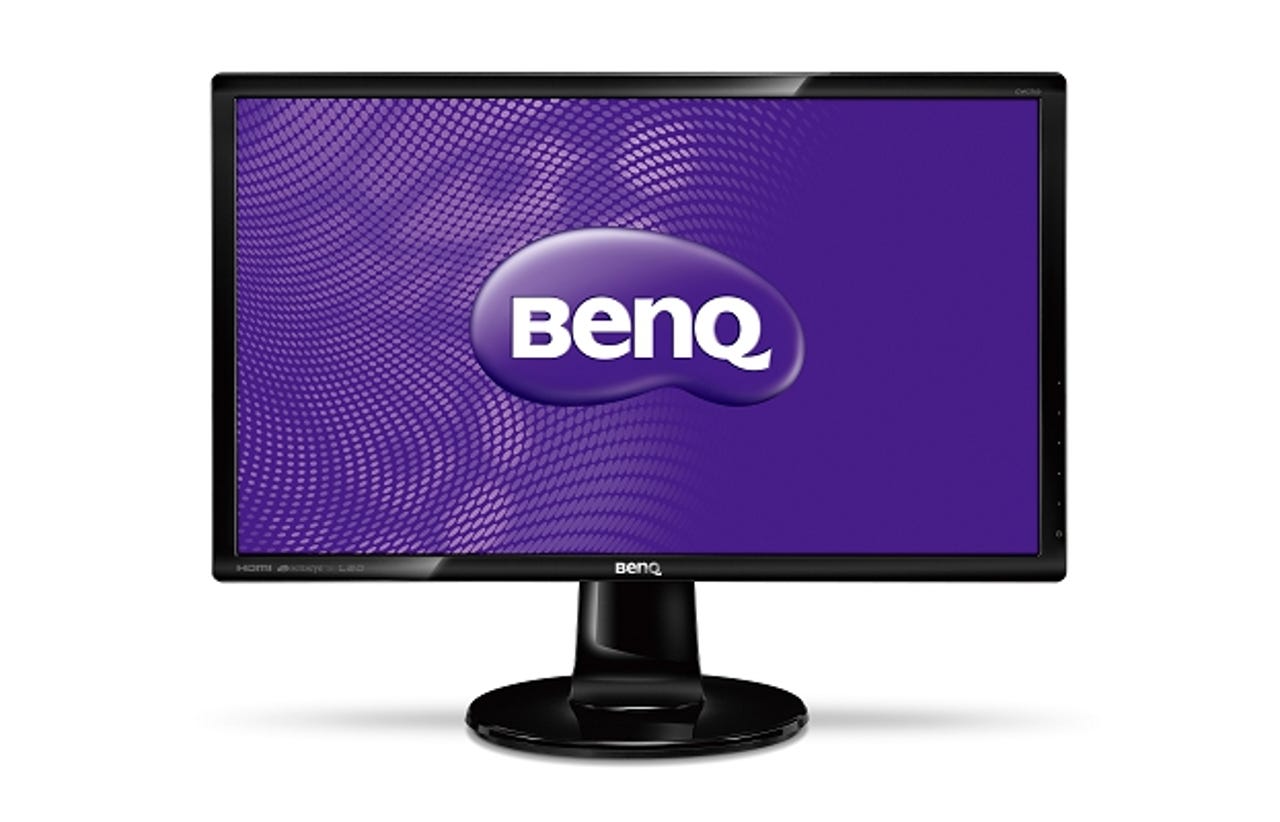Going widescreen on the desktop

Screen resolutions and technologies are changing, with a new, lower cost generation of HD hardware. It used to be that big screens were the province of just a few desks, but with 27-inch monitors now less than £200, they're going to be a frequent sight on many desks — and as they're HD, they'll easily extend the desktop space of modern laptops, ultrabooks, and tablets. The latest devices are also meant to be easier on the eyes than their predecessors, using LED back lighting.
We've been using one for the last few weeks, as part of a multi-monitor set up, under relatively trying conditions for a monitor: in a dark corner of a room, next to a window. That's meant it's needed to be bright; while avoiding eyestrain while working at the keyboard for extended periods, a set-up that's not what you want for happy eyes!

The BenQ GW2760HM is an HD 27-inch screen, with a 16:9 screen at 1920 x 1080 resolution, with LED back lighting. That choice of back lighting is important, as LED monitors like the BenQ are meant to be easier on the eyes than their cathode ray illuminated predecessors, with less flicker and more even brightness. The HM option has a HDMI port, for video and audio — though we found the built-in speakers on the quiet side.
One thing to note: the widescreen 1920 by 1080 form factor means you lose vertical real estate compared to earlier generations of 27-inch screen, with alternate aspect ratios. That can be an issue if you're expecting plenty of screen space for coding or need vertical resolution for proof-reading and design. In practice we quickly got used to working with a wide screen; especially when switching to and from ultrabooks with the same resolution and aspect ratio. If we needed more space, we just hooked up a second monitor. It also worked well with Windows 8's snapped views, with modern apps and desktop apps running at the same time.
LED backlighting gives BenQ the option of more control, and you get a choice of different screen modes for different use cases, from normal operations, to working with video and photos, and for reading documents. While they all work well, there's a big problem with accessibility to controls. The monitor's control buttons are to the back of the lower right of the monitor, and you need to reach around the bezel to access them. Press one, and an on-screen menu shows what each button does, navigating you through a tree of options. Unfortunately that means it's very easy to press the wrong button, so you find yourself cancelling an action and backing out of the menu.
While reaching around the monitor is a problem, there's also the associated problem of reaching out to the monitor. You're not going to have a 27-inch screen right up at your face, especially when it's part of a multi-monitor setup. That means having to reach out across your desk (avoiding cups of tea, pens, paperwork, and the like), before you can even start to hunt for the buttons behind the bezel. That's a common ergonomic flaw with monitors, which aren't really designed to be used at an appropriate distance, or at eye level. One thing we'd have preferred would have been a more adjustable stand. There's no vertical adjustment, just a slight amount of tilt, from the low mounted stand. While you can add after-market stands, you might find it hard to drop a GW2760 into an existing multi-monitor rig smoothly.
If power consumption is an issue (and at only 45W for normal operations, we're not entirely sure if it's going to be), you can switch the monitor into eco-mode, which drops power consumption to a miserly 31W. That makes the display a little dimmer, though dynamic adjustments make sure that you get the optimum viewing response.
All-in-all, the GW2760 works well, once you get used to working with a 16:9 screen. It's not the fastest or the brightest or the highest resolution monitor, but it's a good all-rounder that works well for everything from writing to photography to gaming, and at a reasonable price.
What really did make a difference from other screens we've used was the lack of flicker, making it easier to read long documents or to spend a lot of time at the keyboard. That lack of flicker was especially noticeable with the BenQ next to an older LCD panel, with the eye drawn to the more stable and smoother image — and we were able to stay at the keyboard for longer, with less eye strain.